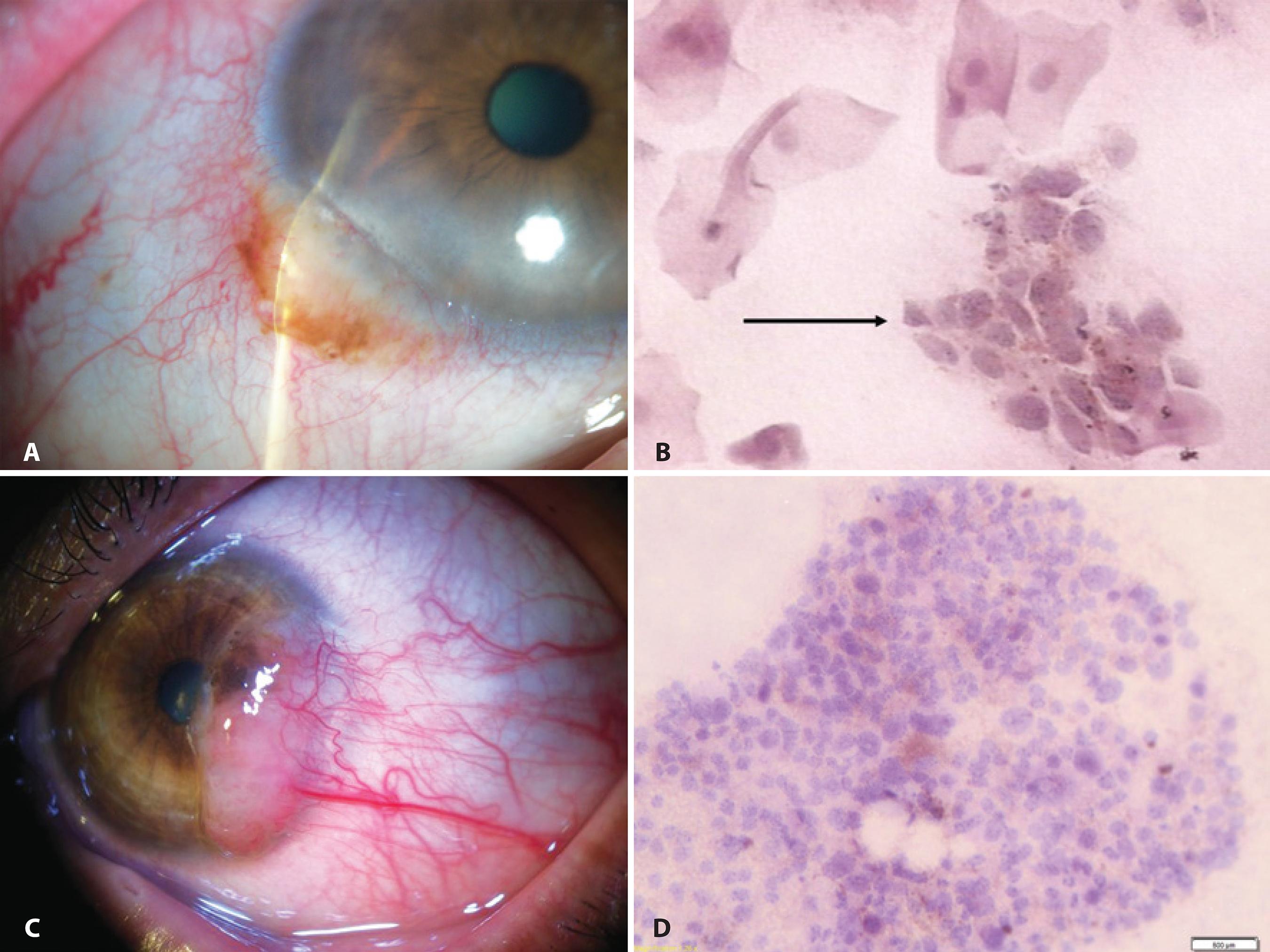Dear Editor,
Intravitreal injection of drugs such as anti-vascular endothelial growth factor (anti-VEGF) agents and corticosteroids has shown encouraging results in the treatment of many ocular diseases. In developed countries, this type of injection is probably the most frequently performed vitreoretinal procedure. However, it has the potential for serious complications, such as endophthalmitis, lens injury, and retinal detachment(11 Fung AE, Rosenfeld PJ, Reichel E. The International Intravitreal Bevacizumab Safety Survey: using the internet to assess drug safety worldwide. Br J Ophthalmol. 2006;90(11):1344-9. Comment in: Br J Ophthalmol. 2006;90(11):1333-4; Br J Ophthalmol. 2006; 90(11):1440-1.). To avoid these unfortunate complications, it is important to assess the safety and cost-effectiveness of intravitreal injection. A safe, cost-effective, calipers-free intravitreal injection technique is presented here.
The patient is placed in the supine position in the operating room. The skin, lids, and lashes are sterilized using 10% povidone iodine, and then, several drops of proparacaine 0.5% and povidone iodine 5% are instilled in the conjunctival cul-de-sac. A speculum is inserted 2 min after the first instillation of 5% povidone iodine drops. An oral instruction is given during the injection to position the eye to either the upper-right or upper-left side on the basis of laterality. The injection site is marked from the limbus by using a sterile polypropylene needle (30G x 13 mm, BD Microlance 1 mL; Becton Dickinson, USA) cap until a circular track appears in the sclera (Figures 1 A, B). Subsequently, the needle cap is removed, and a needle is inserted through the point of intersection of the circle and a tangent parallel to the limbus. The point of intersection is 3.5 mm from the limbus (Figures 2 A, B). To avoid lens damage in phakic patients, the needle can be inserted just behind the marked area or 3.5-4 mm from the limbus. Then, the drug is gently administered. We applied tamponade for a few seconds after the procedure by using a sterile cotton-tip applicator. In the first 100 consecutive intravitreal injections, the injection site was checked by using calipers to ensure a distance of 3.5 mm from the limbus. No lens damage, retinal breaks, retinal detachment, or endophthalmitis due to the procedure were detected.
Marking the injection site by using the sterile needle cap; (A) marked area in the sclera (B).
The point of intersection of the circle and a tangent parallel to the limbus (A) is 3.5 mm from the limbus, and the needle is inserted towards the center of the eye from that point (B).
The recommended injection site for intravitreal anti-VEGF injection is 3.5-4 mm posterior
to the limbus in the inferotemporal quadrant of the globe for pseudophakic and phakic
eyes(22 Aiello LP, Brucker AJ, Chang S, Cunningham ET Jr, D’ Amico DJ, Flynn LR,
et al. Evolving guidelines for intravitreous injections. Retina. 2004;24(5
Suppl):S3-19. Comment in: Retina. 2005;25(7):949-50; author reply
950.,33 Doshi RR, Bakri SJ, Fung AE. Intravitreal injection technique. Semin
Ophthalmol. 2011;26(3):104-13.). Ophthalmic surgical calipers are useful
for determining the injection site. However, this technique is expensive when multiple
intravitreal anti-VEGF injections are performed because individually sterilized sets must
be used for each patient. Our technique using a sterile needle cap that covers and protects
the needle from debris or contamination does not require the use of surgical calipers.
Therefore, our technique is cost-effective. Although Wilson and Scott(44 Wilson ME, Scott AW. How to Give Intravirteal Injections? EyeNet
Magazine April 2013: 45-7.
http://www.aao.org/publications/eyenet/201304/pearls.cfm
http://www.aao.org/publications/eyenet/2...
) mentioned the use of the hub of a sterile
tuberculin syringe for marking the injection site, they did not describe the technique. In
addition, the proposed technique ensures adequate anesthesia before administering the
injection. Our technique can be used for both superior and inferior temporal intravitreal
injections. However, to avoid iatrogenic inferior retinal breakage or detachment, we prefer
superior intravitreal injections.
In our study, we used Becton Dickinson BD Microlance 1-mL 30G x 13-mm caps, which are found in various international markets. Using different needle caps may lead to different distances from the limbus. Therefore, when using needles of different types, we recommend that the distance should be measured first with surgical calipers before the needle cap is used.
In conclusion, our calipers-free technique enables safe and cost-effective intravitreal injections.
-
Funding: No specific financial support was available for this study.
REFERENCES
-
1Fung AE, Rosenfeld PJ, Reichel E. The International Intravitreal Bevacizumab Safety Survey: using the internet to assess drug safety worldwide. Br J Ophthalmol. 2006;90(11):1344-9. Comment in: Br J Ophthalmol. 2006;90(11):1333-4; Br J Ophthalmol. 2006; 90(11):1440-1.
-
2Aiello LP, Brucker AJ, Chang S, Cunningham ET Jr, D’ Amico DJ, Flynn LR, et al. Evolving guidelines for intravitreous injections. Retina. 2004;24(5 Suppl):S3-19. Comment in: Retina. 2005;25(7):949-50; author reply 950.
-
3Doshi RR, Bakri SJ, Fung AE. Intravitreal injection technique. Semin Ophthalmol. 2011;26(3):104-13.
-
4Wilson ME, Scott AW. How to Give Intravirteal Injections? EyeNet Magazine April 2013: 45-7. http://www.aao.org/publications/eyenet/201304/pearls.cfm
» http://www.aao.org/publications/eyenet/201304/pearls.cfm
Publication Dates
-
Publication in this collection
Mar-Apr 2015
History
-
Received
04 Dec 2014 -
Accepted
11 Dec 2014



